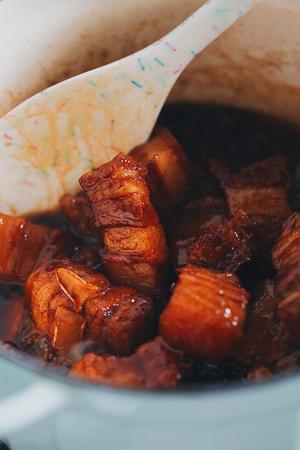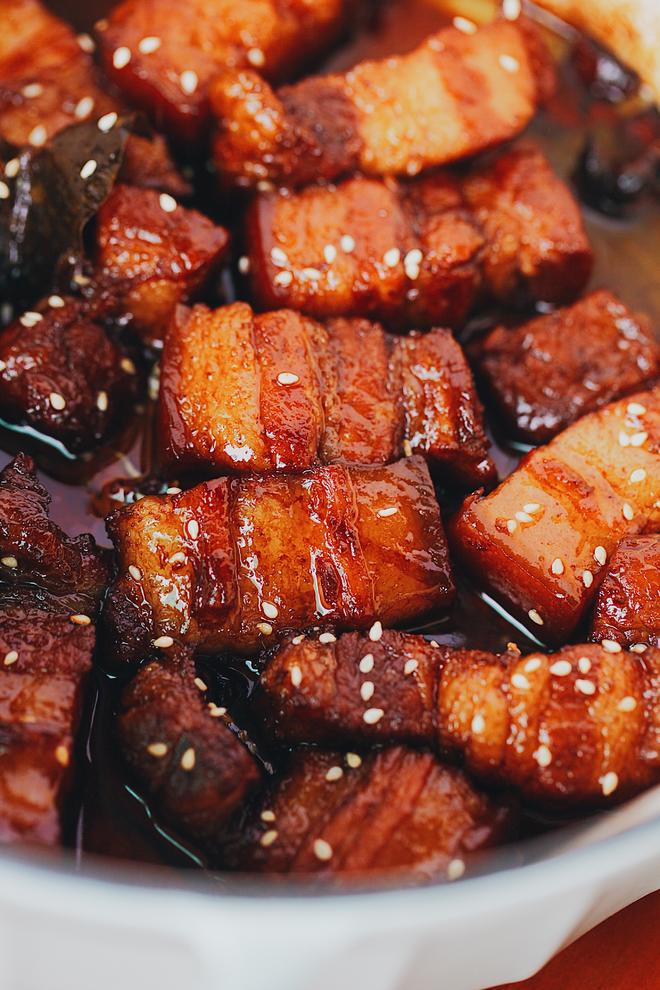Ingredients
Pork Belly with Skin
700g
Rock Sugar
About 10 small pieces
Ginger Slices
4 slices
Star Anise
1-2 pieces (optional)
Bay Leaves
2-3 leaves (optional)
Dried Chili
1 piece (optional)
Yellow Rice Wine
2 tablespoons
Dark Soy Sauce
2 tablespoons
Light Soy Sauce
2 tablespoons
Boiling Water
Enough to cover the meat
Home-style Braised Pork (Hong Shao Rou) Recipe
- Prepare the ingredients. If you’re using frozen pork belly, make sure to thaw it in advance. Slice the ginger. Both dark soy sauce and light soy sauce are types of soy sauce. Dark soy sauce is used for coloring, while light soy sauce is for seasoning. Of course, if your family is used to using only one kind of soy sauce without distinguishing between dark and light, that’s fine too. There’s also soy sauce specifically for braising, which can be used as well. Just keep in mind that the color and saltiness can vary, so adjust accordingly. This recipe provides just one way of preparing the dish.

- Choose pork belly with skin. Wash it thoroughly, changing the water a few times until there’s no more blood in the water. Drain the water, and it’s best to use kitchen paper towels to pat the surface dry. Cut the pork into mahjong-sized cubes. At this point, it’s a good idea to start boiling a pot of water, as you’ll need it to simmer the meat later.
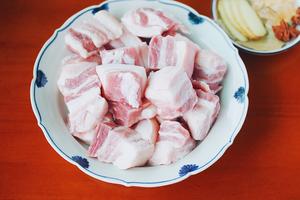
- First, heat the pan without adding any oil. Place the pork belly into the pan, making sure not to overlap the pieces so each one touches the bottom. Don’t rush to flip the pieces; at first, they will stick to the pan and won’t move easily. Slowly sear them over low heat. Once the fat starts to render, you’ll be able to flip them.
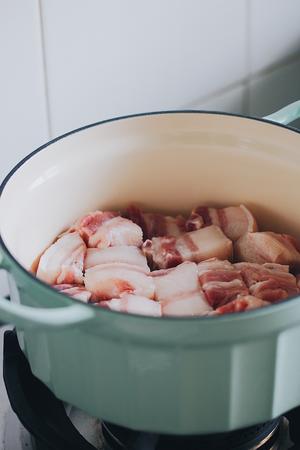
- Keep the heat on low and use chopsticks to turn each piece of meat until the surface becomes slightly golden and some fat is rendered out. However, don’t sear for too long, as the meat will become tough. There’s a similar process in Western cooking when searing steaks, where browning the surface locks in the juices.
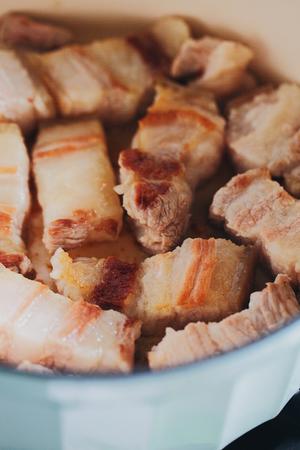
- Next, add the rock sugar, placing it in the area where there’s more oil. Stir-fry gently over low heat for a while, then stir it together with all the meat. Use small pieces of rock sugar; if the pieces are large, break them into smaller fragments, as they are harder to melt. This step is similar to caramelizing sugar, but not exactly the same. If you want to properly caramelize the sugar, you can first remove the meat, leaving the oil in the pan. Add the rock sugar and stir constantly over low heat until it melts completely and starts to bubble. Then, quickly return the meat to the pan and stir-fry evenly. Be careful not to overcook it, as the sugar will turn bitter. Personally, I don’t caramelize the sugar this way. I add the rock sugar directly to the meat in the pan and stir-fry them together. The result is the same—glossy, red, and shiny.
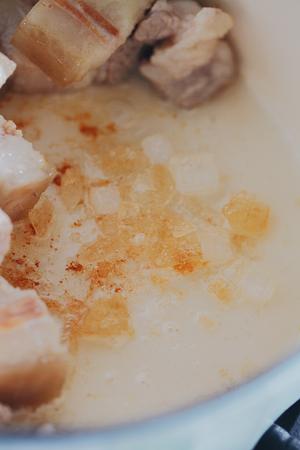
- Once the rock sugar has mostly melted, add the ginger slices, star anise, bay leaves, and dried chili, and stir-fry for a few moments. The dried chili is optional, but I think a slight hint of spiciness helps cut through the richness. As for the star anise and bay leaves, many people don’t use them either, which is fine. Personally, I like adding a bit of spice for flavor, so I include them, but be careful not to use too much.
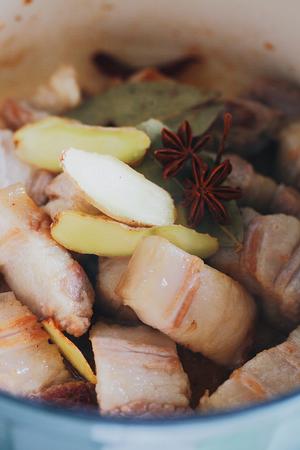
- Pour in the yellow rice wine. In our home, we usually use Shaoxing Huadiao wine, which is a type of yellow wine. If you don’t have yellow wine, you can use regular cooking wine. When the wine hits the hot pan, the aroma is immediately released. Then, add the dark soy sauce and light soy sauce. Stir-fry until all the pieces of meat are evenly coated with the color.
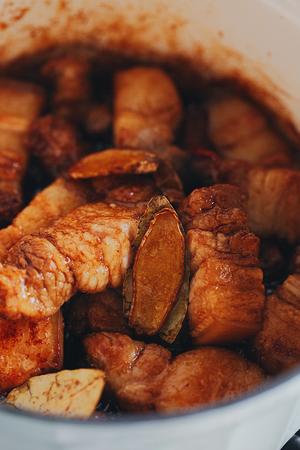
- Next, pour in boiling water, ensuring it covers the meat at least. Make sure it’s boiling water, not cold water. If hot meat comes into contact with cold water, it will shrink quickly and become tough. After adding the boiling water, bring it to a boil over high heat, then reduce to low heat, cover the pan, and let it simmer for 40 minutes to an hour. During this time, keep an eye on the amount of liquid. If the water runs low and the meat isn’t tender yet, you can add more water, but it must be boiling water.
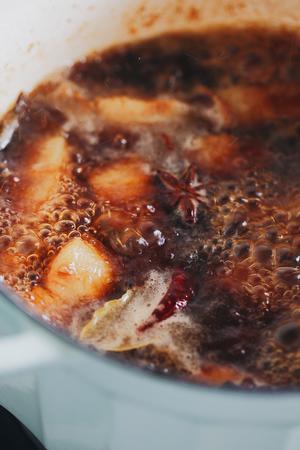
- After simmering for enough time, taste the sauce for saltiness and check the tenderness of the meat. If it’s not quite there, you can continue simmering a bit longer, but usually, it’s enough. At this point, you can remove the lid and turn the heat to high to reduce the sauce. While reducing, be sure to stir frequently. Since the sauce contains sugar, it will thicken as it reduces—the more sugar you added, the thicker the sauce will become. Once the sauce is reduced to your liking, the dish is ready. Be careful not to reduce it to the point where it’s dry. In fact, if you boil off all the liquid, only oil will remain, turning the dish into fried meat, which will make the meat dry. So, keep an eye on it and reduce it until the sauce is thick but still has the rich soy sauce color. Finally, sprinkle some sesame seeds for a more visually appealing presentation.
